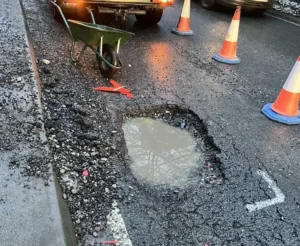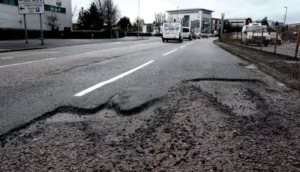The highways sector needs a national strategy on highway maintenance to ensure it can work collaboratively to deliver more preventative surface treatments across the UK network.
This message come from Paul Boss, Chief Executive of the Road Surface Treatments Association (RSTA), who was responding to last week’s report by independent watchdog, Transport Focus, which said road surfaces on England’s motorways and major ‘A’ roads is drivers’ top priority for improvement.
Transport Focus spoke to more than 5,600 drivers to understand their top priorities for improvement to England’s major roads. As National Highways (formerly Highways England) prepares its longer term plans, the watchdog checked in with road users to understand their current priorities.
Almost one in five car and van drivers rated the quality of road surfaces on England’s motorways and major ‘A’ roads as poor, with potholes and cracks being the main concerns.
About two thirds (65%) of car and van drivers placed more importance on the maintenance of existing roads than building new roads or adding lanes to existing ones. The safer design and upkeep of roads was road users’ second priority for improvement, followed by better management of roadworks.
Mr Boss said that while this report focuses on the national networks, attention needs to be given to local roads as well to help create effective, seamless journeys for the travelling public. “Finding a way to get more preventative treatments on to the trunk road and motorway networks make sense right now given the benefits of using these surface treatments to keep the network in better condition for longer in a more sustainable way. But we must not forget that if we want to give the public what they want, local roads need the same attention. Nobody starts out on a motorway, A and B roads feed all routes to and from motorways so whether you are travelling for business or pleasure, you want those roads in consistently good condition as well.
“Despite underfunding, local roads are usually maintained in a reasonable or good condition due to the implementation of highway asset management plans that have programmed preventative surface treatments as key to their whole lifecycle cost and performance models,” he added.
“As well as helping cracks and potholes from forming in the first place, preventative surface treatments have many other benefits including being more sustainable than other methods of repair and it is vital moving forward that these are included as part of cost-effective long-term asset management plans. We need to keep on maintaining standards and finding a way to make procurement of these treatments less complicated so that all road operators can get easy access to the best surface treatments.”
Mr Boss went on to note that the Department of Transport (DfT), together with the UK Roads Liaison Group (UKLRG) and the Association of Directors of Environment, Economy, Planning and Transport (ADEPT)’s Asset Management Board have developed a detailed business case for investing in highway maintenance. The business case will be presented to Government and HM Treasury later this month, prior to the Comprehensive Spending Review in the autumn.



























